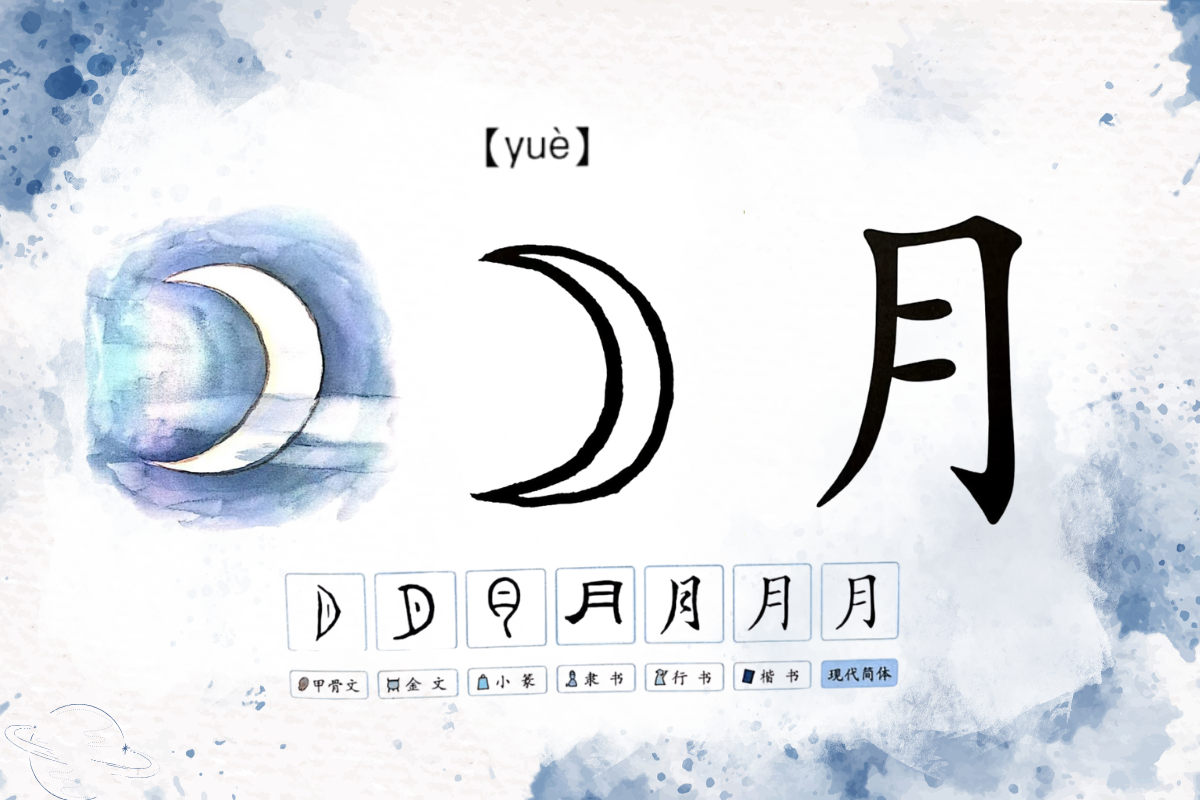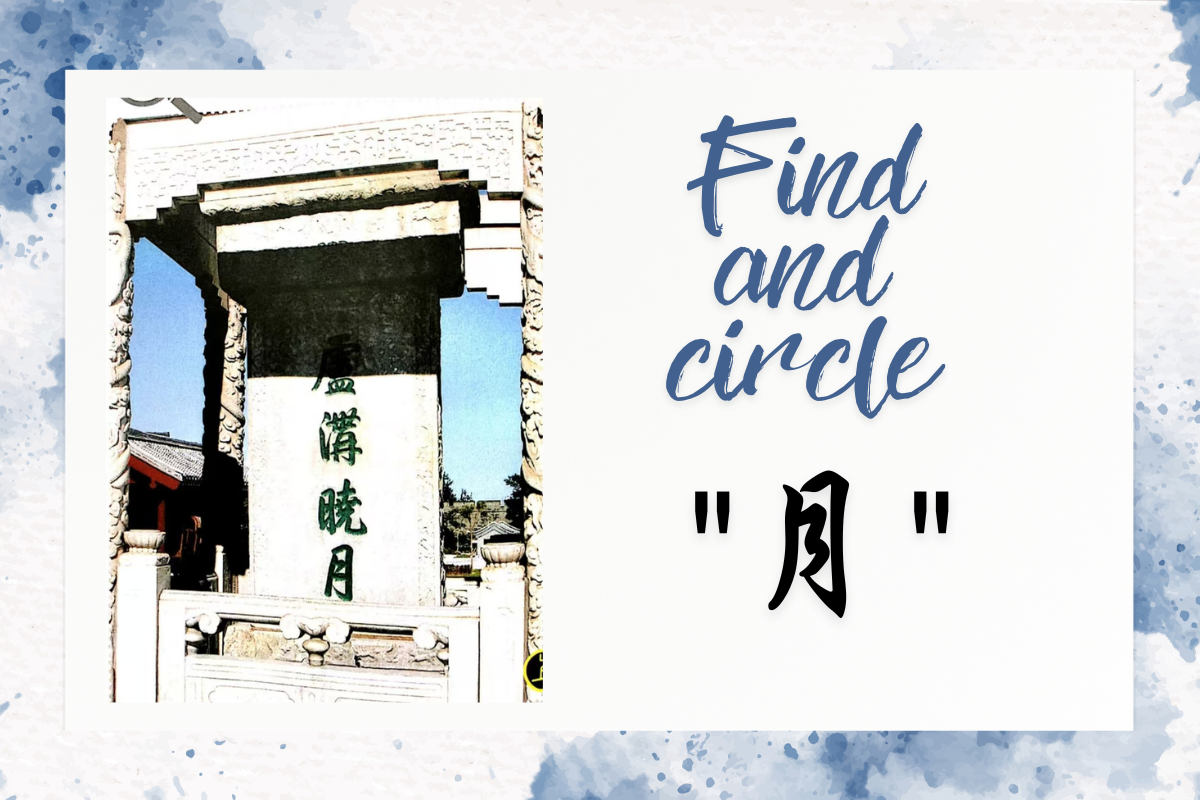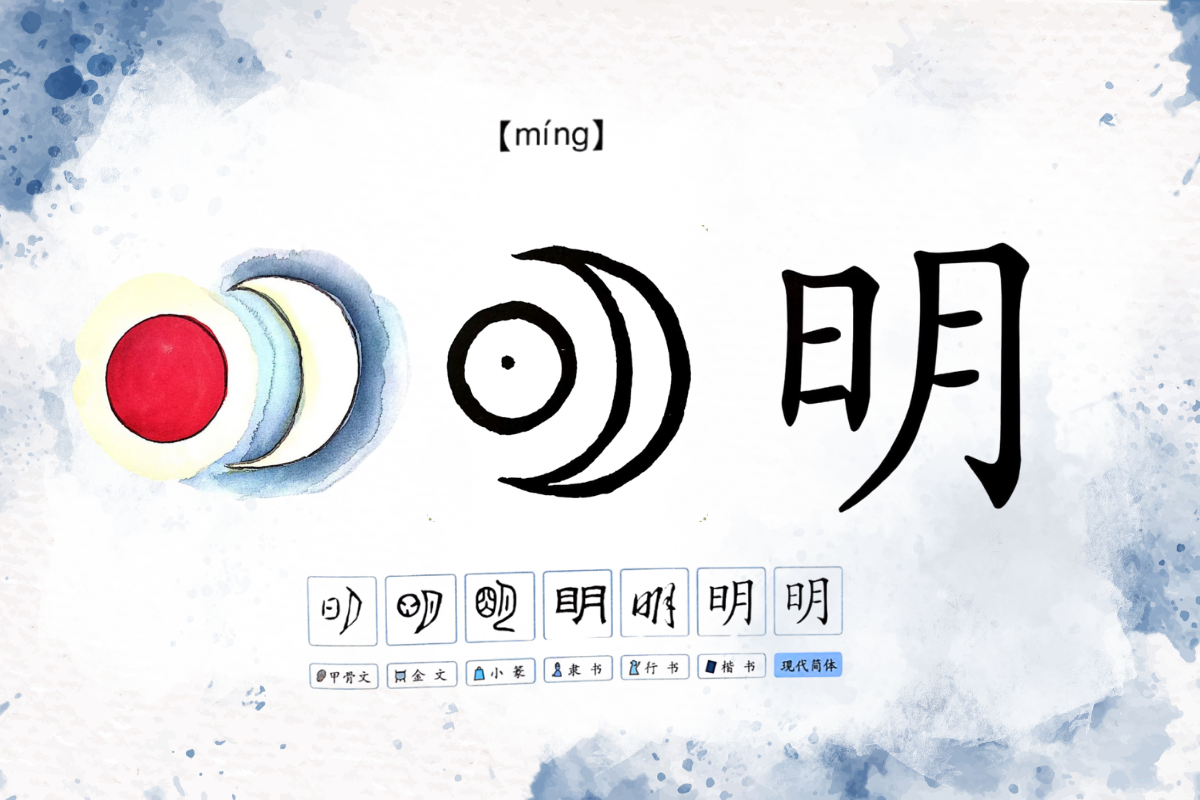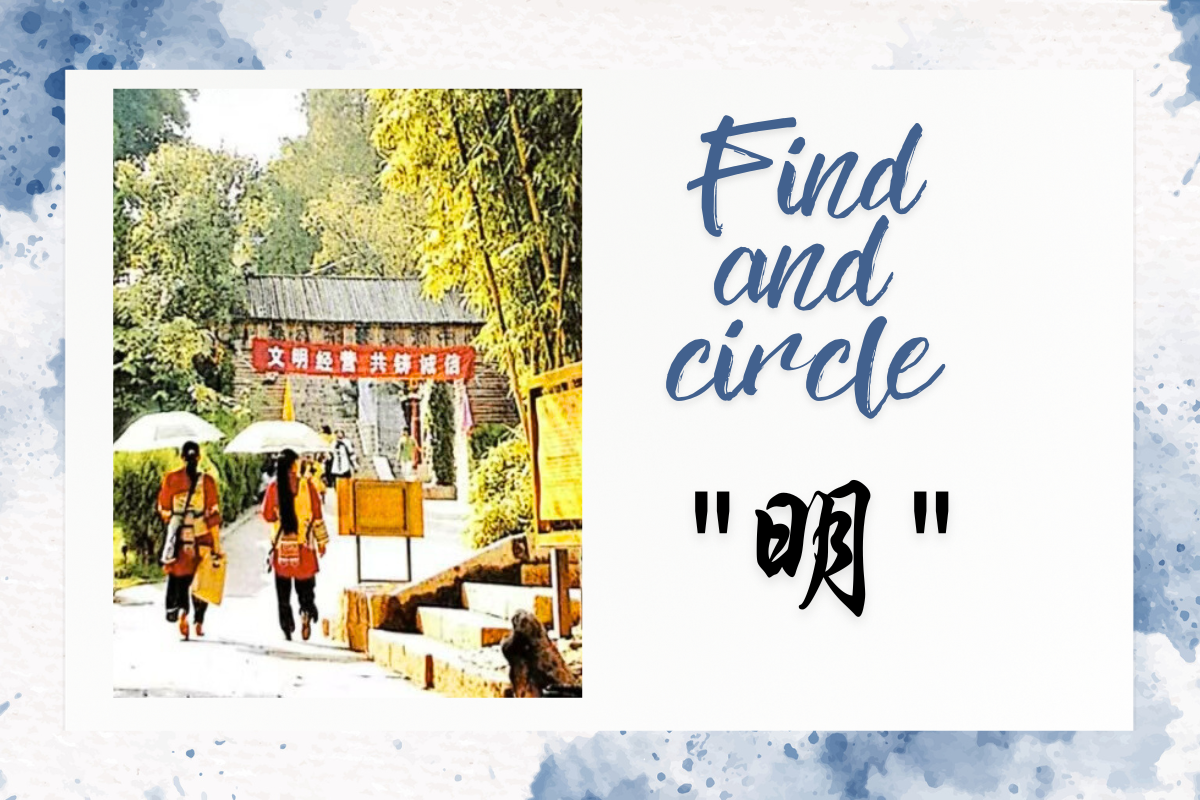Hanzi Alive!(3)
Moonlight in Chinese characters not only illuminates the night sky but also hides ancient secrets. "月" represents the silver hook in the night sky, while "明" symbolizes the wisdom of the sun and moon shining together. Let's uncover the light and shadow stories behind these two characters.
月(yuè)
Explanation:
"月" (yuè) means "moon" or "month." Take a look at how it evolved through five different time periods. You can see its transformation from a new moon shape to a moon with shadows, gradually taking the form we recognize today.

Example Sentences:
The moon is in the sky.
月亮在天上。
Yuè liang zài tiān shàng.
I work every month.
我每个月都在工作。
Wǒ měi gè yuè dōu zài gōng zuò.
The crescent moon looks like a small boat.
月儿弯弯像小船。
Yuè er wān wān xiàng xiǎo chuán.
Find and circle the "月" in the image:

明(míng)
Explanation:
If the sun and the moon appeared together, it would be especially "bright," which is the meaning of "明" (míng). Another interpretation is that the left side represents a window, and the moonlight shining through the window makes everything "bright."

Example Sentences:
Tomorrow is Monday.
明天是星期一。
Míng tiān shì xīng qī yī.
The classroom lights are very bright.
教室里的灯光很明亮。
Jiào shì lǐ de dēng guāng hěn míng liàng.
He went blind.
他失明了。
Tā shī míng le.
Find and circle the "明" in the image:

Now, whenever you see "月," you'll think of the moonlight from centuries past. And when you encounter "明," remember: true brightness comes from the wisdom of the sun and moon shining together. So, why not try creating two sentences yourself!